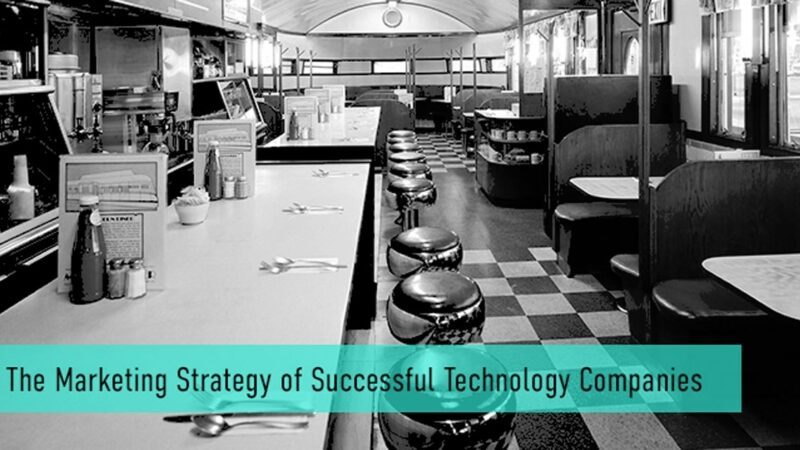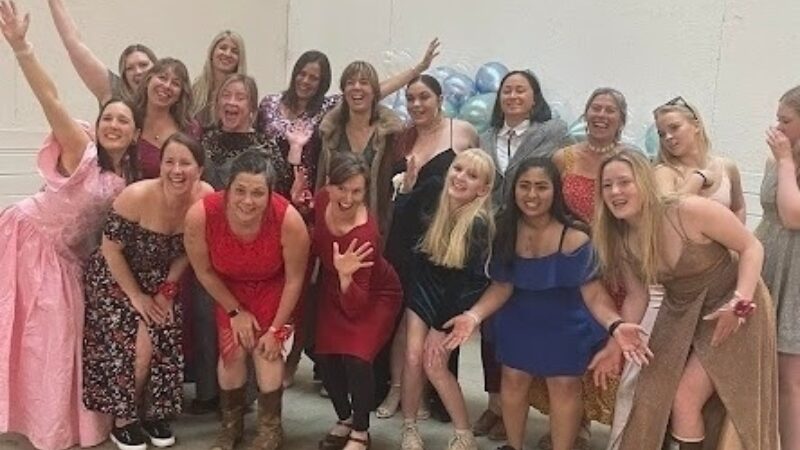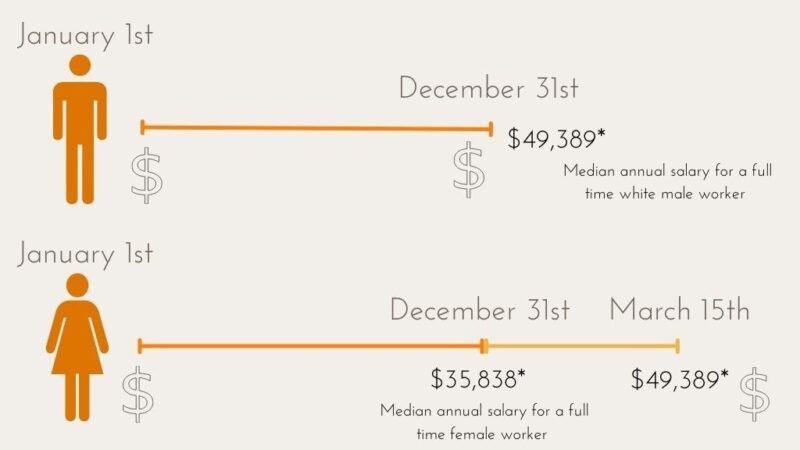PowerHouse Blog
The Marketing Strategy of Successful Technology Companies
February 21, 2018 | By Erika Rasmussen

By Helena PowerHouse, Whitney Mitchell
This blog is one of several articles that will feature the growing technology industry in Montana. The series, called Big Sky. Big Silicon. Marketing Montana's High-Tech Companies, was conceptualized to offer insight into marketing best practices for the tech industry while also supporting Montana’s high-tech companies by exposing their products and services to a greater audience.
I often make the joke that the reason I like country music is because it was the only radio station picked up in my rural Montana hometown. As I dressed and prepared for school in the mornings, I listened to a country music station out of Great Falls. I distinctly remember a radio live-commercial for a diner. Each morning the diner owner called into the station to promote the specials for that day. The person described delicious homemade soups, an enormous salad bar to satisfy every customer, and sandwiches made with the freshest Montana prime rib. Every morning I’d think, I want to have lunch there. So why didn't I? For starters, the drive to the diner was 90+ miles one-way. It wasn’t the diner’s fault, they didn’t mean to tease me, but they were spending a lot of money to advertise to an entire market of unqualified leads. Despite how tantalizing their homemade tomato soup sounded, I was an unqualified lead for three key reasons:
What can a modern technology company learn from a local diner? Twenty-five years ago, there weren’t other options available to the diner except for expensive, traditional marketing. With the evolution of technology and the way civilization consumes information, successful marketing has changed to become less disruptive and more integrated. Yet, many companies still have marketing strategies that appear to look like they are from the 1990’s, or even worse, the 1950’s. As a technology company located in Montana, it’s important to utilize modern marketing methods to increase your reach and deliver relevant content to your key demographic. Inbound marketing is a methodology that uses storytelling and remarkable content to attract your company’s best demographic – the demographic who drives revenue. In his book, Permission Marketing, Seth Godin explains that companies have a new privilege (not the right) to deliver anticipated, personal and relevant messages to people who actually want to get them. This new type of marketing recognizes customers have the power to ignore marketing and it treats people with respect to earn their attention and brand loyalty. Just like you wouldn’t make a first impression by immediately asking a customer in a showroom for the sale, you shouldn’t do that in digital marketing either. Start by focusing on the relationship. Inbound marketing focuses on building relationships with key personas and nurturing potential customers through a process until you’ve earned their trust and are positioned as a key resource to fulfill their needs. At that point, it’s a softer and easier sell.
The Inbound Marketing Methodology First coined by HubSpot CEO, Brian Halligan, inbound marketing is being adopted by thousands of companies around the world who value attracting qualified leads by offering relevant, helpful, value-added content. This proven method of marketing is directly aligned with the buyer’s journey, and unlike often-costly outbound marketing techniques, inbound strategies won’t fight for your potential customers’ attention. If your company is creating content designed specifically to address every need of your ideal customer, you will attract your revenue-driving demographic and build trust. You can do this through a 4-stage process: Attract
Think of your company as a flower. As a flower, do you want to attract a house fly? No. Do you want to attract a butterfly? Possibly, but not ideally. You want a bumble bee.
Anybody can visit your website, but you don’t want just anybody, and not everybody wants you. The use of inbound marketing will help your ideal customers find you when they’re looking for you. Your ideal customer is researching how to solve a problem they’re experiencing, and when they discover a piece of content you wrote addressing this specific need, they will evolve from a stranger to a visitor.
Examples of content that will help attract strangers:
Attract
Think of your company as a flower. As a flower, do you want to attract a house fly? No. Do you want to attract a butterfly? Possibly, but not ideally. You want a bumble bee.
Anybody can visit your website, but you don’t want just anybody, and not everybody wants you. The use of inbound marketing will help your ideal customers find you when they’re looking for you. Your ideal customer is researching how to solve a problem they’re experiencing, and when they discover a piece of content you wrote addressing this specific need, they will evolve from a stranger to a visitor.
Examples of content that will help attract strangers:
What is the Buyer’s Journey? We’ve all been in a store with an overzealous sales person showing us the newest product on the shelf, pushing us to buy it, making us uncomfortable and eager to remove ourselves from the situation. We were only there to browse after all. On the flip side, how frustrating is it when you’re shopping for something specific and you walk in the store and see mostly empty shelves? Whether you are window shopping or ready to make a purchase, both stages are equally important in the buyer’s journey. According to HubSpot, the buyer’s journey is the process buyers go through to become aware of, evaluate, and purchase a new product or service. This journey is a three-step process: Let’s break down these stages:
Let’s break down these stages:
Once you identify your buyer’s journey, be sure to provide relevant content for each stage that is tied back to the 4 stages of inbound marketing methodology. If you’re serving up the right content at the right time for your potential customers, you’re going to edge out the competition and gain the trust of your customers. Remember, no one likes to be sold, so use inbound marketing to educate and build trust with potential customers and your existing database.
As a Montana technology company, you’re faced with finding an audience who exist beyond the borders of our great state. You can help your customers find you by using inbound marketing. Sign-up to receive our next blog to dig deeper into inbound marketing and best practices to get started developing your company’s buyer personas.
This concludes our second posting in the Big Sky. Big Silicon. Marketing Montana's High-Tech Companies blog series - stay tuned for our next installment, and don’t miss a post!
I often make the joke that the reason I like country music is because it was the only radio station picked up in my rural Montana hometown. As I dressed and prepared for school in the mornings, I listened to a country music station out of Great Falls. I distinctly remember a radio live-commercial for a diner. Each morning the diner owner called into the station to promote the specials for that day. The person described delicious homemade soups, an enormous salad bar to satisfy every customer, and sandwiches made with the freshest Montana prime rib. Every morning I’d think, I want to have lunch there. So why didn't I? For starters, the drive to the diner was 90+ miles one-way. It wasn’t the diner’s fault, they didn’t mean to tease me, but they were spending a lot of money to advertise to an entire market of unqualified leads. Despite how tantalizing their homemade tomato soup sounded, I was an unqualified lead for three key reasons:
- I didn’t live within driving distance.
- I was an elementary school student (no purchasing power).
- Obviously, I didn’t even have my driving license.
What can a modern technology company learn from a local diner? Twenty-five years ago, there weren’t other options available to the diner except for expensive, traditional marketing. With the evolution of technology and the way civilization consumes information, successful marketing has changed to become less disruptive and more integrated. Yet, many companies still have marketing strategies that appear to look like they are from the 1990’s, or even worse, the 1950’s. As a technology company located in Montana, it’s important to utilize modern marketing methods to increase your reach and deliver relevant content to your key demographic. Inbound marketing is a methodology that uses storytelling and remarkable content to attract your company’s best demographic – the demographic who drives revenue. In his book, Permission Marketing, Seth Godin explains that companies have a new privilege (not the right) to deliver anticipated, personal and relevant messages to people who actually want to get them. This new type of marketing recognizes customers have the power to ignore marketing and it treats people with respect to earn their attention and brand loyalty. Just like you wouldn’t make a first impression by immediately asking a customer in a showroom for the sale, you shouldn’t do that in digital marketing either. Start by focusing on the relationship. Inbound marketing focuses on building relationships with key personas and nurturing potential customers through a process until you’ve earned their trust and are positioned as a key resource to fulfill their needs. At that point, it’s a softer and easier sell.
The Inbound Marketing Methodology First coined by HubSpot CEO, Brian Halligan, inbound marketing is being adopted by thousands of companies around the world who value attracting qualified leads by offering relevant, helpful, value-added content. This proven method of marketing is directly aligned with the buyer’s journey, and unlike often-costly outbound marketing techniques, inbound strategies won’t fight for your potential customers’ attention. If your company is creating content designed specifically to address every need of your ideal customer, you will attract your revenue-driving demographic and build trust. You can do this through a 4-stage process:
 Attract
Think of your company as a flower. As a flower, do you want to attract a house fly? No. Do you want to attract a butterfly? Possibly, but not ideally. You want a bumble bee.
Anybody can visit your website, but you don’t want just anybody, and not everybody wants you. The use of inbound marketing will help your ideal customers find you when they’re looking for you. Your ideal customer is researching how to solve a problem they’re experiencing, and when they discover a piece of content you wrote addressing this specific need, they will evolve from a stranger to a visitor.
Examples of content that will help attract strangers:
Attract
Think of your company as a flower. As a flower, do you want to attract a house fly? No. Do you want to attract a butterfly? Possibly, but not ideally. You want a bumble bee.
Anybody can visit your website, but you don’t want just anybody, and not everybody wants you. The use of inbound marketing will help your ideal customers find you when they’re looking for you. Your ideal customer is researching how to solve a problem they’re experiencing, and when they discover a piece of content you wrote addressing this specific need, they will evolve from a stranger to a visitor.
Examples of content that will help attract strangers:
- Blogging
- Frequent and relevant social media posts
- Utilizing the keywords your key demographic use in search engines
- Developing webpages and landing pages that address your target audience’s problems
- Calls-to-Action
- Landing Pages
- Forms
- Virtual messaging and chats
- CRM
- Pipeline management
- Lead nurturing
- Predictive lead scoring
- Smart content designed exclusively for existing customers
- Virtual and real conversations
- Customer-only specials
- Workflows
What is the Buyer’s Journey? We’ve all been in a store with an overzealous sales person showing us the newest product on the shelf, pushing us to buy it, making us uncomfortable and eager to remove ourselves from the situation. We were only there to browse after all. On the flip side, how frustrating is it when you’re shopping for something specific and you walk in the store and see mostly empty shelves? Whether you are window shopping or ready to make a purchase, both stages are equally important in the buyer’s journey. According to HubSpot, the buyer’s journey is the process buyers go through to become aware of, evaluate, and purchase a new product or service. This journey is a three-step process:
 Let’s break down these stages:
Let’s break down these stages:
- Awareness Stage: the buyer realizes they have a problem.
- Consideration Stage: the buyer defines their problem and researches options to solve it.
- Decision Stage: the buyer chooses a solution.
- Awareness Stage: I work for a technology company having a hard time reaching my target market oversees.
- Consideration Stage: I see that inbound marketing would be a good fit for our company, but I’m not sure I have the bandwidth to implement a new strategy.
- Decision Stage: I can try to get by with what we’ve always done, but I’m still not reaching those potential clients. Or I can hire an agency dedicated to supporting their clients through inbound marketing. I’ll hire the agency.
| Awareness Stage | Consideration Stage | Decision Stage |
| How do buyers describe their goals or challenges? | What categories of solutions do buyers investigate? | What criteria do buyers use to evaluate the available offerings? |
| How do buyers educate themselves on these goals or challenges? | How do buyers educate themselves on the various categories? | When buyers investigate your company’s offering, what do they like about it compared to alternatives? What concerns do they have with your offering? |
| What are the consequences of inaction by the buyer? | How do buyers perceive the pros and cons of each category? | Who needs to be involved in the decision? For each person involved, how does their perspective on the decision differ? |
| Are there common misconceptions buyers have about addressing the goal or challenge? | How do buyers decide which category is right for them? | Do buyers have expectations around trying the offering before they purchase it? |
| How do buyers decide whether the goal or challenge should be prioritized? | Outside of purchasing, do buyers need to make additional preparations, such as implementation plans or training strategies? |



